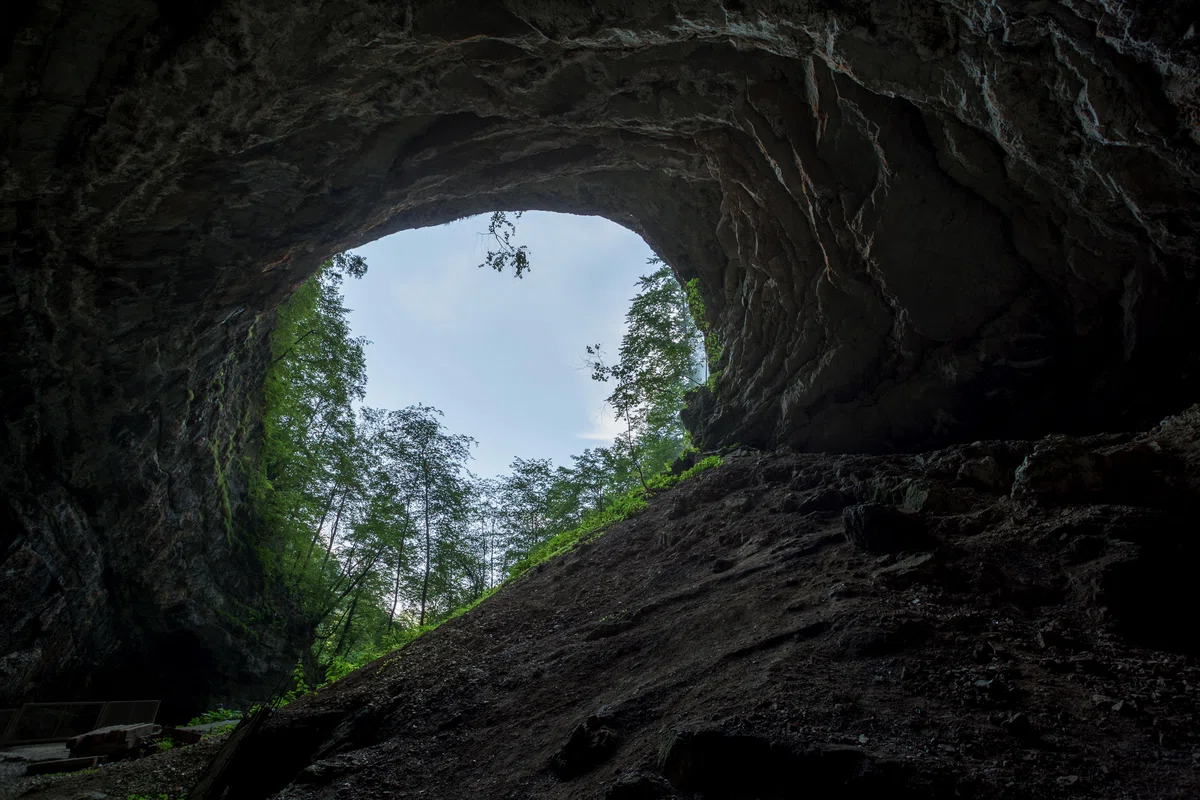
The oldest caves in Georgia. Visit the Dzuzuana Cave.
Excavations and expeditions have been conducted in the Dzuzuana Cave for a long time. As a result, after searching here, they found the remains of a twisted thread, and a lot of decorated elements. Scientists have established that the found thread is the oldest in the world! There are a lot of traces of ancient people's habitation in the cave.
It is known that karst processes are most active in limestone layers. Most of the Chiatura Municipality consists of just such layers. This explains the presence of a large number of caves on the territory of this municipality. Although most of these caves have not yet been explored and explored.
In the scientific circles of the world, the Dzudzuana cave is well known, located 2 km east of the village of Mgvimevi, in the valley of the Nekresi River.
Since 1996, an international expedition has been working in the cave, which includes Georgian, American and Israeli specialists. The purpose of the expedition is to establish the migration routes of Homo Sapiens of the Paleolithic era, to study its activities. During the years of research on the territory of the cave, only seven layers of Upper Paleolithic living were revealed and about a hundred objects were found: bones with ornaments, pendants, amulets, amulets, stone tools.
In the cave, scientists also found the remains of a twisted thread made of wild flax fiber. Laboratory studies have established that the thread was made and dyed by hand using a certain technology 34 thousand years ago. Based on this, the thread found in the Dzuzuani cave is the oldest in the world. Prior to this discovery, the oldest thread was considered to be a thread made of nettle 2900 thousand years ago, found on the territory of modern Czech Republic, in Dolnivestonica. The sample found in Dzuzuani pushed back the date of human manufacture of the thread by 5000 years.
Traces of ancient man's habitation in Chiatura were also found in the caves of Mgvimevi, Ortvala Klde (Cilto III), Chipiani Klde, Gvardjilas Klde. Along with tools and ornaments made of flint, obsidian, bones and deer horn, samples of Upper Paleolithic human painting were also found in the cave. Scientists A. Apakidze, N. Berdzenishvili, Al. Kalandadze, D. Tushamramashvili, Z. Tatashidze and others made a great contribution to the study of the Chiatura caves.

Location:
Kvirila River Valley, Chiatura municipality, Mgvimevi village.

Coordinates:
N42 18'46''; Е43 19'03''.

How to get:
The distance from Tbilisi is 180 km, from Chiatura – 5 km, from Kutaisi – 76 km.













32 comments
Log in to leave a comment
него человека.Найденная кручёная нить оказалась самой древней в мире.Множество украшенных элементов, амулеты, орудие труда и ещё
множество находок.Спасибо автору за информацию.